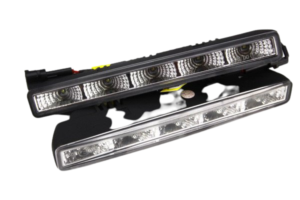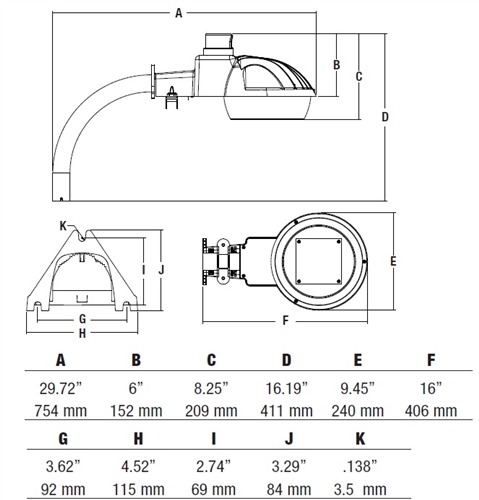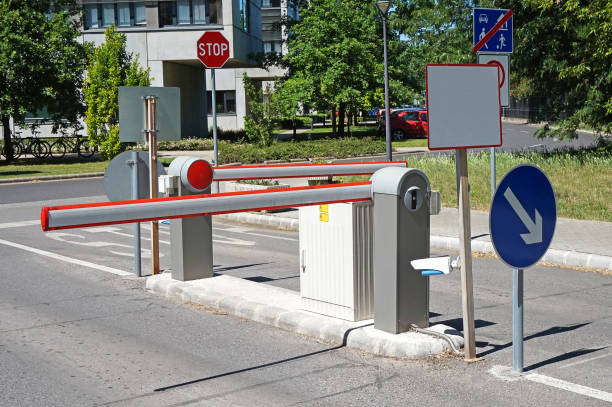A parking lot light is a crucial part of your parking lot, and it is a critical part of the overall safety and security of your parking lot. It will keep you safe from hazards that can cause accidents and injuries. It can also help you identify potential problems such as potholes, cracks, and other road hazards.
Table of Contents
Types of parking lot lights
When it comes to illuminating parking lots, choosing the right type of light is crucial. Proper lighting ensures safety, security, and convenience for both drivers and pedestrians. Whether you are a business owner, property manager, or simply interested in the topic, understanding these options will help you make an informed decision for your parking lot lighting needs.
LED Parking Lot Lights
LED parking lot lights are a popular choice due to their energy efficiency, long lifespan, and superior brightness. They offer significant energy savings compared to traditional lighting options. LED lights are highly durable, resistant to vibrations, and require minimal maintenance. They provide excellent color rendering and can be customized to meet specific lighting requirements.
Solar Parking Lot Lights
Solar parking lot lights harness the power of the sun to illuminate parking areas. These lights are independent of the electrical grid, making them an environmentally friendly and cost-effective solution. Solar lights utilize photovoltaic panels to convert sunlight into electricity, which is stored in batteries and used to power the lights during nighttime. They are easy to install, require minimal maintenance, and can operate even during power outages.
Induction Parking Lot Lights
Induction parking lot lights are known for their longevity and energy efficiency. These lights use electromagnetic fields to generate light, eliminating the need for electrodes found in traditional bulbs. They have a lifespan of up to 100,000 hours and provide consistent brightness throughout their operation. Induction lights are a great option for areas where frequent maintenance is difficult or costly.
Metal Halide Parking Lot Lights
Metal halide parking lot lights are known for their high-intensity illumination. They produce a bright white light that closely resembles natural daylight, improving visibility and safety. Metal halide lights are commonly used in large outdoor spaces such as parking lots and sports fields. However, they have a shorter lifespan compared to LEDs and may require regular maintenance.
High-Pressure Sodium (HPS) Parking Lot Lights
High-pressure sodium lights are another common choice for parking lot lighting. They emit a warm yellowish light and are known for their efficiency in converting electricity into visible light. HPS lights have a long lifespan and provide good illumination, but they take longer to warm up compared to other types of lights. They are often used in areas where color rendering is not critical.
Compact Fluorescent Lights (CFL)
Compact fluorescent lights are a popular choice for indoor lighting, but they can also be used in parking lots. They are energy-efficient and provide a bright, white light. CFLs have a longer lifespan than incandescent lights and are relatively affordable. However, they contain small amounts of mercury and should be properly disposed of to minimize environmental impact.
Halogen Parking Lot Lights
Halogen lights are known for their intense brightness and wide beam angles. They are commonly used in residential and commercial settings. Halogen parking lot lights provide good color rendering and instant illumination. However, they are less energy-efficient compared to LED or induction lights and have a shorter lifespan.
Incandescent Parking Lot Lights
Incandescent lights are the traditional choice for lighting, but they are gradually being phased out due to their low energy efficiency. They produce warm, yellowish light and have a short lifespan. Incandescent parking lot lights are not commonly used anymore, as more energy-efficient options are available.
1) Daytime Running Lights (DRL)
These are lights that are meant to be used in the daytime, and they are used to help you see obstacles in the road that you can’t see in the dark. These lights are typically bright enough to see while driving at night, but they are also designed to be bright enough to be seen during the day.
The daytime running lights are a mandatory safety device for all vehicles. DRLs were introduced in the UK in 2005 and have now been implemented throughout Europe and the USA. It is a common misconception that the lights are only used during the daytime. The daytime running lights are used during the day and night time.

What is DRL?
The daytime running lights are a pair of white light sources that are mounted to the front of the vehicle, usually on the headlights. When turned on, the lights flash intermittently to alert drivers behind of the vehicle that it is moving.
There are two types of daytime running lights – the main headlamps and the sidelights. The main headlamp is the main light source for the vehicle and the sidelights are used for rearward visibility.
Where do they go?
The daytime running lights are installed on the front of the vehicle, usually on the headlights. The lights are turned on automatically when the car is switched on. The lights are activated when the vehicle is in motion and is moving at a speed of 5mph or above.
What are the benefits of having the DRL?
Having daytime running lights installed on your vehicle is mandatory. The DRL helps to prevent accidents that occur during the night. It also helps to reduce the risk of hitting objects such as pedestrians, animals, or obstacles. It also helps to make the driver visible to other drivers and road users.
What are the disadvantages of having the DRL?
Having daytime running lights can be an annoyance to some drivers. The lights can be distracting to drivers when driving. The lights are also expensive to replace and can cost up to £400.
Dusk to Dawn Lights (DDL)
The DDL lights will allow you to stay active throughout the night. The light will make you feel less tired and help you get up in the morning feeling fresh and awake. If you have been feeling tired and lethargic, it might be time to invest in a good DDL lighting system.
These are lights that are used to light up your parking lot at night. The main purpose of these lights is to make it easier for you to see obstacles in the dark, and it also helps drivers see you better.
What Are DDL Lights?
The DDL lights are LED lights that you can attach to your existing ceiling fan and ceiling fan motor. They can be purchased separately and installed by the DIYer or a professional.

What Features Do These Lights Have?
The DDL lights have a built-in battery and remote control so that you can control the intensity of the light and the time period during which the light turns on.
What Are the Pros of DDL Lights?
The DDL lights have multiple benefits.
- First, you will be able to use the lights at any time, day or night. It will not matter if you are sleeping or waking up, these lights will keep you feeling energized and awake.
- Second, the DDL lights are energy efficient. The light will only emit the amount of light needed to illuminate the area and won’t waste any energy.
- Third, the lights are designed to reduce your stress levels. It will help you to relax and sleep better.
- Fourth, the DDL lights will help you get a good night’s rest.
The lights can be used in multiple areas of the house. You can use them in your bedroom, living room, kitchen, bathroom, and laundry room.
What Are the Cons of DDL Lights?
In recent years, LED lighting has been growing in popularity as it is energy-efficient and offers many benefits. It is estimated that by 2027, 90% of all light bulbs sold in the US will be LED. However, there are a few drawbacks to LED lighting that you need to be aware of.
- The cost of LEDs is still high. Currently, the price of a standard LED bulb is around $10 per bulb. While it is still cheaper than CFLs, the price may go up if production volume increases.
- Light quality can be poor. LED bulbs are more efficient than incandescent bulbs, but they still produce light with lower quality than CFLs.
- The lifespan of LEDs is shorter than CFLs. If left unmonitored, LEDs can burn out in less than 2 years.
- The bulbs can break easily. LED bulbs are made of brittle glass and can break easily. This can be dangerous if you have children or pets in the house
Parking Lot Barrier Lights
You can see parking lot barrier lights in every city and town. The lights are very helpful for people who need to park their vehicles in a parking lot. They are also helpful for the cars to detect the vehicles parked in front of them and alert the drivers to avoid a collision. In this article, we are going to discuss parking lot barrier lights and how they work.
In most cities and towns, the parking lot barrier lights are installed on both sides of the road. They are connected to each other with a wire. When a vehicle passes through the barrier light, the light will flash and the vehicle will be alerted.

Features of Parking Lot Barrier Lights
The lights are usually installed on the roads so that they can be seen from a distance. The lights can be turned on or off by the drivers. If you need to turn the lights on, you can switch the button. The lights will flash when you enter the parking lot.
The lights will flash when a vehicle enters the parking lot. The flashing will be stopped when the car is out of the parking lot. The lights will flash again when you enter the parking lot. This way, the drivers can see the parking lot and avoid parking their vehicles in the wrong place.
Problems with Parking Lot Barrier Lights
The lights are usually installed on the roads and parking lots. Sometimes, the wires are damaged by the vehicles. The wires can be damaged due to the vehicles passing through the lights. The lights are usually installed in the parking lots of schools and hospitals. The wires are damaged due to the children running around the parking lot.
Stop Light
This is a type of traffic signal that is meant to stop all traffic. It is typically used in parking lots that are near a busy road, and it is meant to help drivers avoid accidents by warning them of the danger.
The Stop Light is a great invention that has the ability to save lives and make driving safer. If you are in the car when you see the red light, you know what to do, you know how to stop. However, sometimes you cannot see the red light or it is so dark that you cannot see it. When this happens, you are left with the choice of stopping or running into the red light.

How Does The Stop Light Work?
It uses the sensors in your car to detect the color of the light and then determines if the light is green, yellow, or red. It then displays the message to you and gives you the option of either slowing down or continuing to drive.
The Stop Light Can Be Used In Many Ways
Many drivers have complained that the Stop Light has been implemented in the wrong places, like intersections with multiple lanes, or they were not sure if the light was red or green. The Stop Light can also be used in parking lots, at bus stops, or in any area where it can help to make the road safer.
Benefits of the Stop Light
The Stop Light is a great invention and it has many benefits. It can save lives, it can prevent accidents and it can help reduce injuries. It can help reduce the number of accidents caused by distracted driving. It can prevent injuries from hitting the brakes and it can prevent accidents caused by not stopping when you are supposed to. It can also reduce injuries caused by rear-end collisions.
Factors to Consider When Choosing Parking Lot Lights
When selecting parking lot lights, there are several factors to consider:
- Brightness and Visibility: Ensure the lights provide adequate brightness and uniform illumination across the parking lot.
- Energy Efficiency: Opt for lights with high energy efficiency to reduce operational costs.
- Maintenance and Lifespan: Consider the maintenance requirements and lifespan of the lights to minimize downtime and replacement costs.
- Environmental Impact: Choose lighting options that have a minimal environmental impact, such as LEDs or solar lights.
- Lighting Control Options: Explore lighting control options, such as motion sensors or timers, to optimize energy usage.
- Compliance with Regulations: Ensure the chosen lights comply with local regulations and standards.
Read More:
- How To Put Up LED Lights
- Best Led Strip Light For Garage
- Best Waterproof Led Strip Lights
- Best Light Bulb For Garage Door Opener
- Best Outdoor Light Bulbs For Cold Weather
- Best Dusk To Dawn Light Bulb For Every Home
FAQs
What is the most energy-efficient type of parking lot light?
LED lights are the most energy-efficient option for parking lot lighting, offering significant energy savings and a long lifespan.
Can solar parking lot lights work during cloudy days?
Solar parking lot lights can still operate during cloudy days, although the amount of illumination may be reduced compared to sunny days. Most solar lights have built-in batteries to store excess energy for use during low-light conditions
Are metal halide lights suitable for small parking lots?
Metal halide lights are commonly used in large outdoor spaces, including parking lots. However, for small parking lots, LED lights are often a more cost-effective and energy-efficient choice.
How can I reduce light pollution from parking lot lights?
To reduce light pollution, use lighting fixtures with proper shielding to direct light downward. Additionally, consider implementing lighting control systems that adjust lighting levels based on occupancy or ambient light conditions
Are there any incentives for upgrading to energy-efficient parking lot lights?
Many regions offer incentives, grants, or rebates for upgrading to energy-efficient lighting solutions. Check with local authorities or energy providers to explore available programs